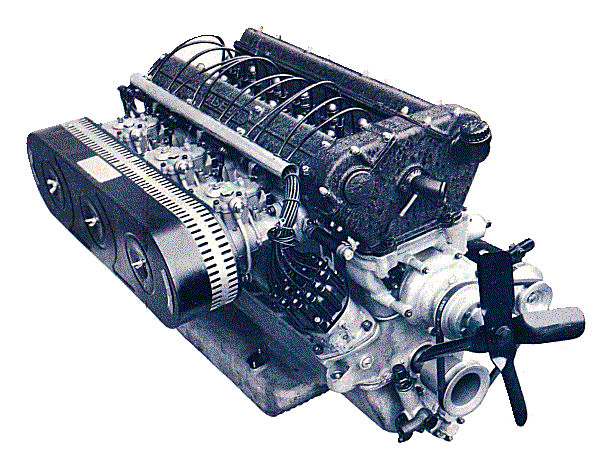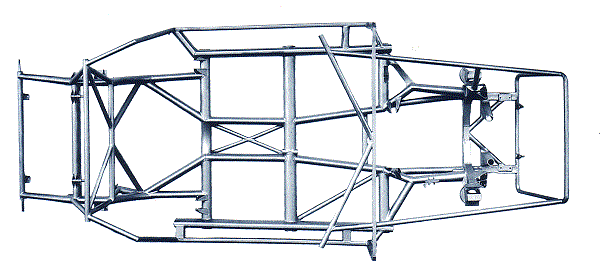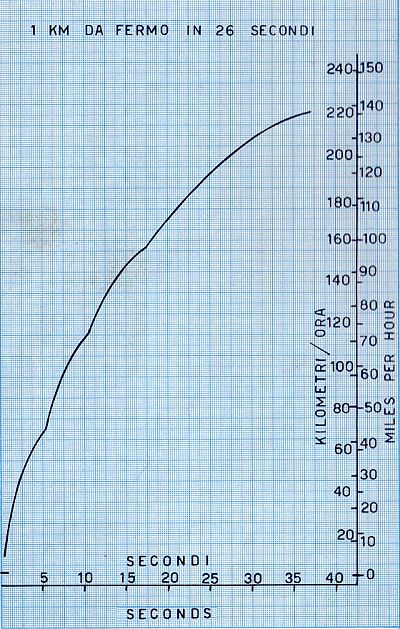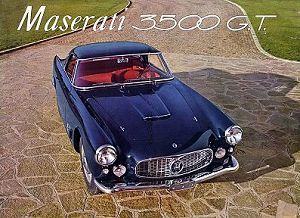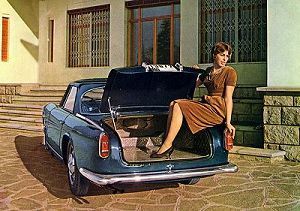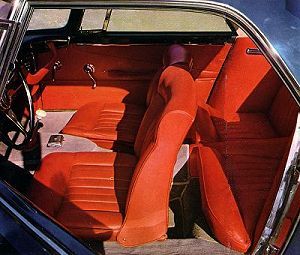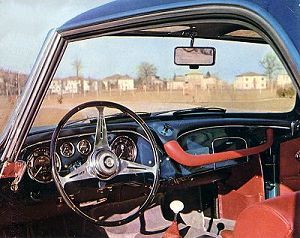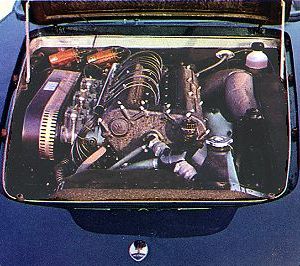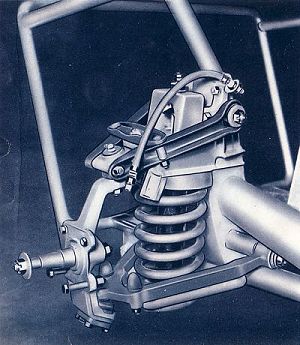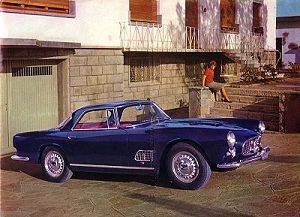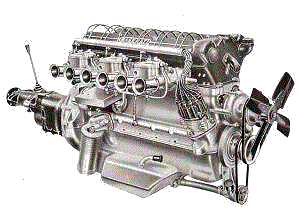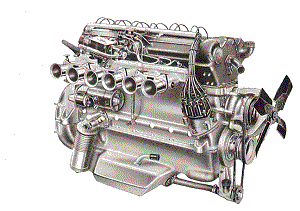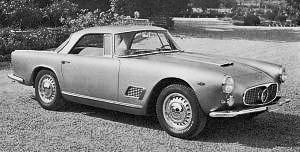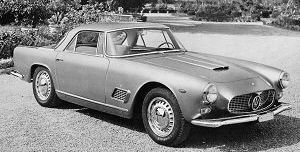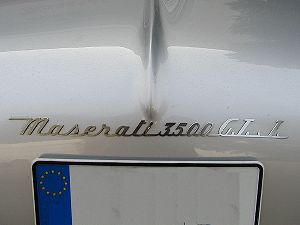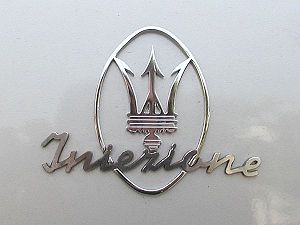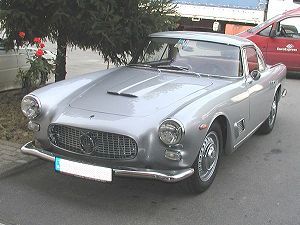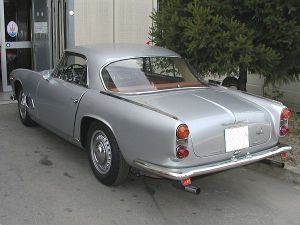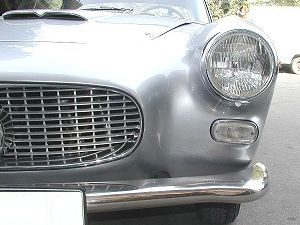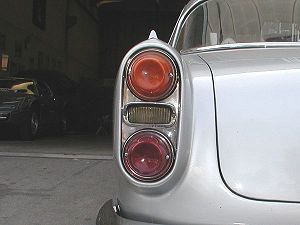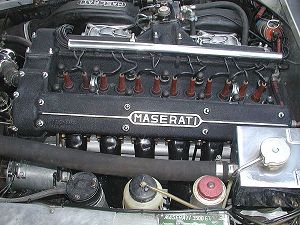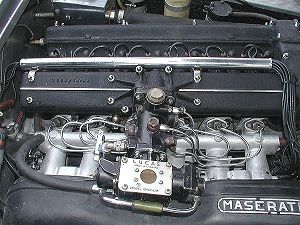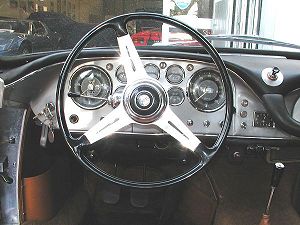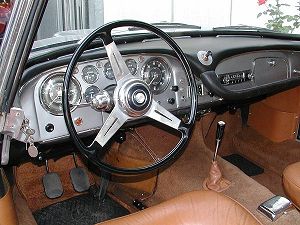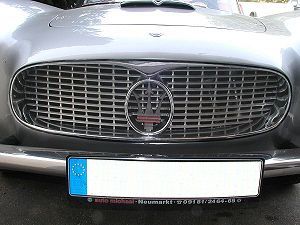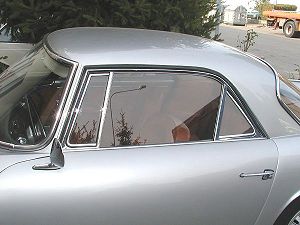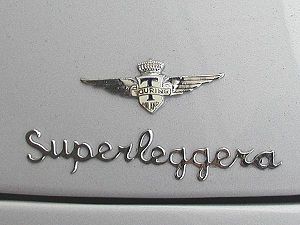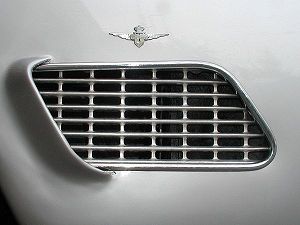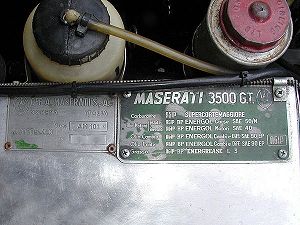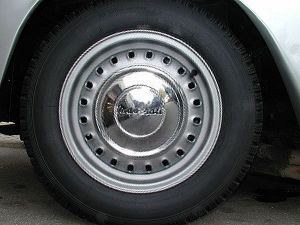|
TECHNICAL DATA - TIPO 101 3500 GT/GTI |
|
| Body type |
2+2 Coupé |
| Production years |
From 1957 to 1964 |
| Engine |
Front engined 6 cylinder in-line |
| Bore and stroke |
86 mm X 100 mm |
| Engine capacity |
3485.3 cc |
| Compression ratio |
8.2:1 |
| Maximum power |
220 bhp @ 5500 rpm (235 bhp @ 5500 rpm) |
| Maximum power from 1961 |
235 bhp @ 5500 rpm |
| Distribution |
Two overhead camshafts, two valves per cylinder |
| Induction system |
Three twin-choke 42 DCOE Weber carburettors |
| Induction system from 1961 |
Lucas direct fuel injection |
| Ignition |
Twin with Marelli distributor |
| Lubrification |
Forced with pressure pump with total draining |
| Transmission |
Rear wheel drive |
| Differential |
Salisbury 'live' axle |
| Clutch |
Single dry plate |
| Gearbox |
4 speed and reverse (5-speed from 1961) |
| Chassis |
Welded tubular construction |
| Front suspension |
Independent wheels, coil-springs
and telescopic shock-absorbers |
| Rear suspension |
Rigid axle, semi-elliptical leaf-springs
and telescopic shock-absorbers |
| Brakes |
Hydraulically operated drum brakes on all
four wheels (optional front disc brakes) |
| Wheelbase |
2600 mm |
| Wheel tracks |
Front 1390 mm Rear 1360 mm |
| Tyres |
Front:- 6.50 x 16 Rear:- 6.50 x 16 |
| Dry weight |
1466 kg |
| Maximum speed |
230 km/h (143 mph) |
|
|
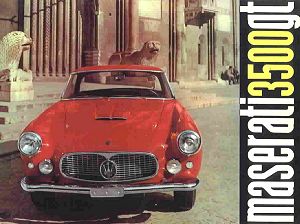 |
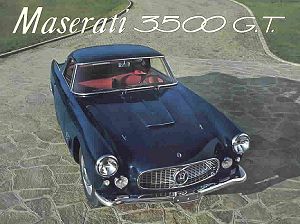 |
|

